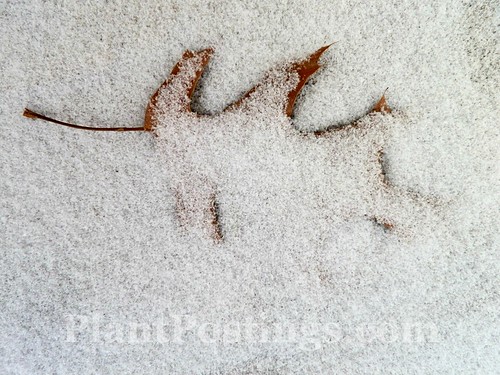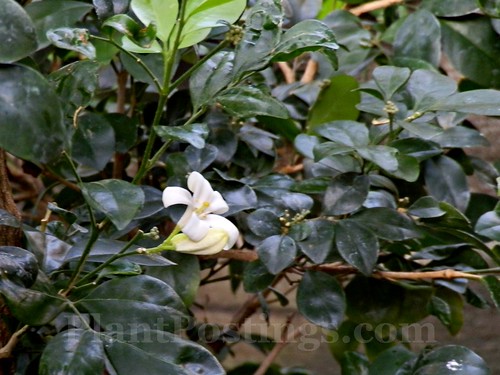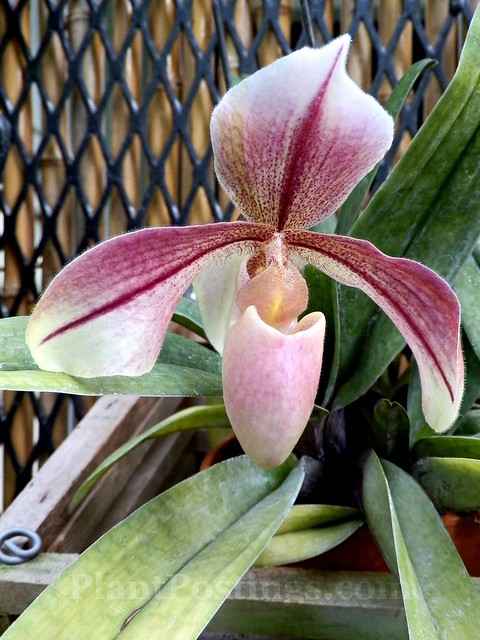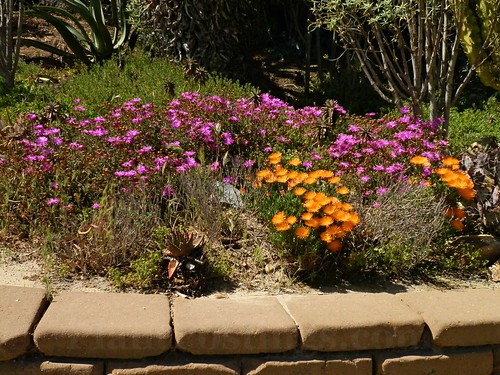
Back in March 2016, we had a family event in San Diego, so we made a vacation of it and did some sightseeing and exploring on the side. I've done a few previous posts on San Diego's botanical highlights.
Today, I'm focusing on Balboa Park's Desert Garden. I honestly only spent about two or three hours touring Balboa Park, and although there's much, much more to explore on a return trip, it's astonishing how many amazing treasures I discovered. Note that very few of the Desert Garden plants were marked (and I'm less familiar with these), so please correct me if I've identified them incorrectly.
The Desert Garden and Rose Garden are set off a bit from the rest of Balboa Park.
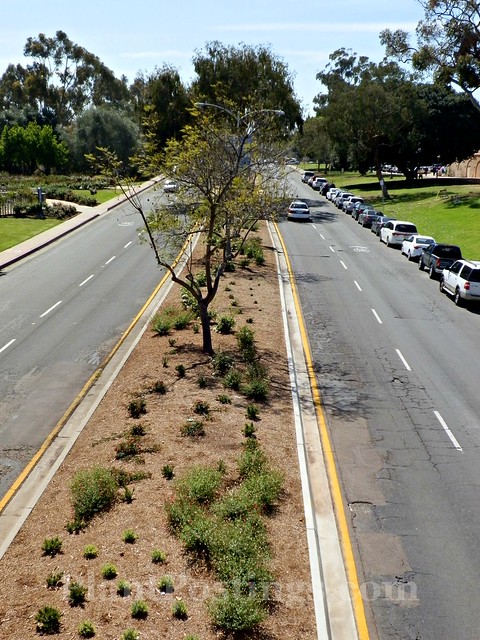
As you walk the bridge over Park Blvd., you notice that even the medians are planted with lovely xeric plants.

Looking back over the bridge, this offers some perspective--most of Balboa Park is on the other side.

At the edge of the Desert Garden, you get a nifty canyon view overlooking the highway below.

When I was there, the Ice Plants (Delosperma cooperi) were blooming.
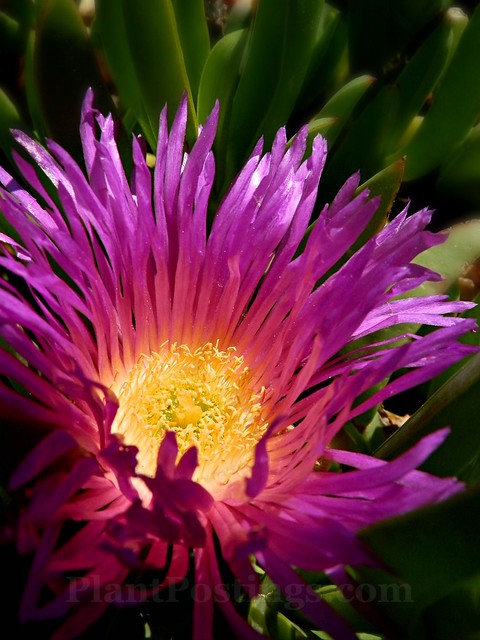
A stunning sight to see after four months of bitter winter.

I always notice the lizards when I travel. I know--when you see them all the time, it's not a big deal. But we have only a few lizards in Wisconsin.

This cute, little hummingbird followed me around the Desert Garden. I think it was a rufous, although I didn't get close enough for a positive ID.

This grouping of Golden Barrel Cactuses (Echinocactus grusonii) was impressive framed by Statice flowers (Limonium sinuatum).

Blooming Barrel Cactuses (Ferocactus spp.) were plentiful, too. The yellow flowers were yummy in the California sunshine.

I love the common name of this one: Old Man Cactus (Cephalocereus senilis). It looks soft as a pillow, but be careful! I also like the Oxalis blooms floating in among the grouping: I don't know if this was intentional, but it was pleasant.

The Sennas (Cassias?) were blooming golden yellow, too. I think this is either Senna surattensis or Cassia leptophylla. These two genera seem to be under review and have similar histories and purposes. Anyway, they're glorious in bloom.

No question about the drama and awesomeness of the Torch Aloes (A. arborescens). They seem much at home in San Diego, although they're native to Southern Africa.

How about this awesome Cow's Horn Euphorbia (E. grandicornis)?
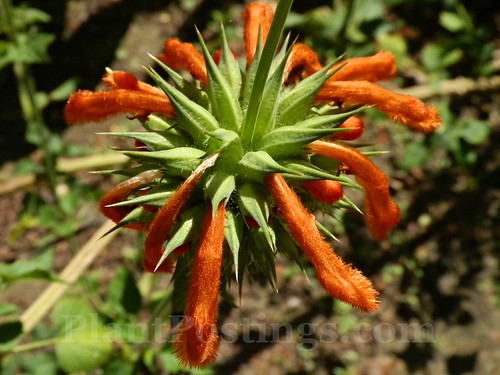
Lion's Tail (Leonotis leonurus) seems to beckon hummingbirds.
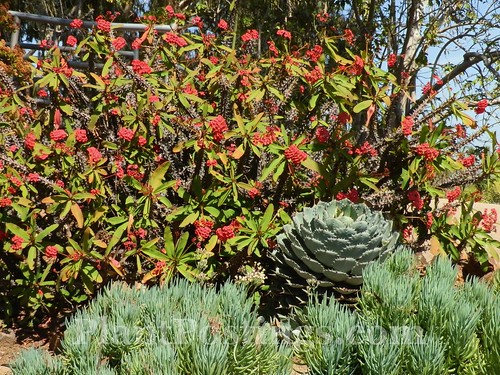
This grouping was my favorite in the Desert Garden: a beautiful Artichoke Agave (A. parryi), nestled between Crown of Thorns (Euphorbia milii) and Narrow-Leaf Chalksticks (Senecio cylindricus).
In this cold, wet transition from winter to spring here in Wisconsin, I'm longing for a warm, dry day. These pleasant memories help...a little.




